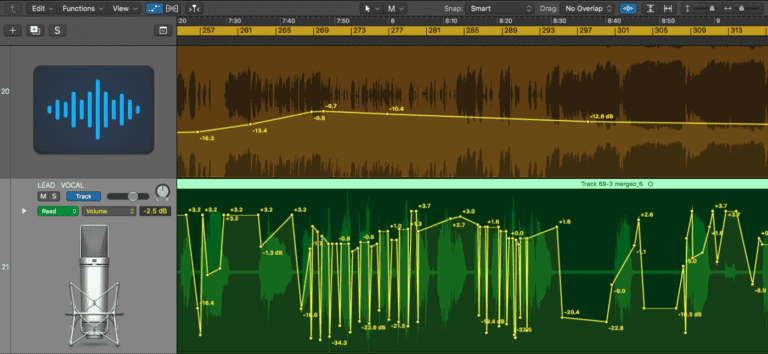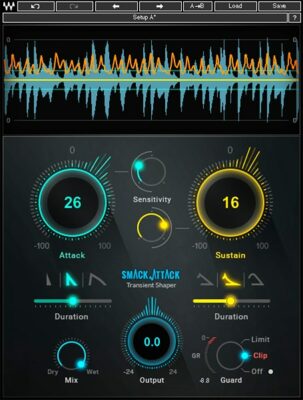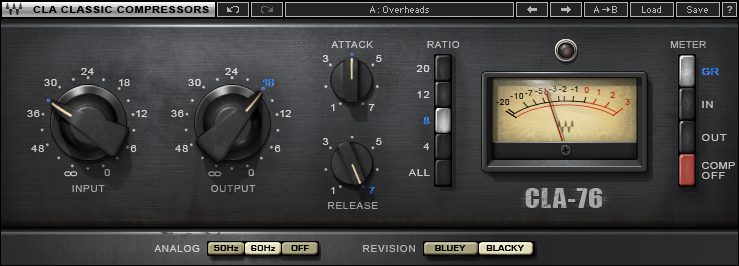There are few things in music production surrounded by as many myths as compression. Despite compressors being around since the 1930s, there are still misunderstandings about how they work and what they do. We have previously explained what compressors are and the different types available. In this article, we will debunk ten common myths about compression.
1. Professionals use special super-secret pro settings
On YouTube, there are 4,295,567 (we haven’t counted) videos claiming to reveal the best and most professional settings for compressing various audio sources. If there were a set of universally best settings, all these videos would recommend the same settings—but they don’t. What they really say is, “These settings work for me, and they might work for you too.” Professionals know enough about compressors to adjust the settings themselves to achieve the desired effect.
2. Trust that presets do what they claim
A preset called “Female Vocal” may sound good for female voices. Or it may not. Either way, you can’t know if you’re hearing the intended result unless the input signal is exactly the same as when the preset was designed. A higher input signal would exceed the threshold level more often and result in more compression than a lower signal. It would be helpful if presets specified the amount of gain reduction so that you could get an idea of how to adjust the input level and threshold.
3. Increasing the ratio turns the compressor into a limiter
There are endless debates about this on various forums, but there is rarely anyone who can provide exact definitions of a limiter and a compressor. A stickler for language would say that a limiter must have an infinite ratio, while others would say that a 20:1 ratio is, for all practical purposes, limiting the sound. So the myth is that there are official and universally accepted definitions—but there aren’t. If you need a limiter, use a limiter. If you don’t have a limiter, crank up the compression as high as you can. Simple!
4. If the dynamic level is poor, compression is the solution
This is rarely true. Proper microphone technique, such as having the vocalist move closer or farther from the mic, helps fix variations in the dynamic level of the sound source. Slapping on a compressor to adjust uneven volume is unlikely to sound professional. However, no matter how well you’ve recorded, you will most likely still need to make volume adjustments afterward.

A suggested workflow could be to (after a good recording) adjust the volume regionally, meaning raise or lower the volume of the entire recording to fit your project. This is followed by volume automation, where you manually specify when, where, and by how much the volume should be raised or lowered in your music program. Finally, you can use one or more compressors and/or limiters to taste.
5. Vocals + fast attack = true
A fast attack often works well with vocals, but not always. For example, consonants at the beginning of words may not sound as clear with a fast attack. In rap music, the compressor’s attack time can make a difference between an effective, intelligible vocal and a vocal lacking punch.
6. Very fast attack time on drums = lifeless sound
One way to preserve transients in drums is to lengthen the attack time, but often parallel compression provides a more natural sound—compressing one signal while the parallel original signal preserves transients with the highest possible accuracy. Using a transient shaper like Smack Attack (Waves), Spiff (oeksound), or SplitEQ (Eventide) on the original signal’s transients can take this even further—either by emphasizing the transients or tightening the drum sound by reducing what comes after the transients.

7. Compression removes the human character of vocals
Yes, inappropriate compression can make a voice sound unnatural. But also no, because moderate compression can enhance breaths and other sounds that make the vocals sound more intimate. Vocals are rarely recorded in a natural setting (a studio without reflections), so a compressor can help make the vocals more consistent in volume. This, in turn, can help make the voice sound more natural than it did without compression. Often, it’s wise to use more than one compressor and/or limiter. Experiment and see what you prefer!
8. Only ignorant beginners add EQ after compression
There are no rules about whether the compressor should come before or after EQ. It’s common to have an EQ both before and after the compressor. Maybe even another compressor?! The best choice is what sounds best, and only you know what sounds best in your song.
9. Follow the laws about which type of compressor to use
Even though certain types of compressors have become popular for specific types of sounds, you shouldn’t ignore other options. For example, some people believe that an optical compressor like the LA-2A always sounds better on vocals. But aggressive vocals, for example, may benefit from a FET compressor like the 1176, while an optical compressor may help soften the release of a drum sound in a calmer song… or not. Listen and decide for yourself! Not using the standard compressor for every occasion can also give your music a more unique sound than music made by those who follow the trend.

10. Heavy compression makes your music sound spectacular when streamed
This is no longer true. Streaming services adjust the audio levels based on LUFS (Loudness Unit Full Scale). Songs with the same LUFS values have the same perceived loudness. Excessively compressed music won’t sound louder than music with normal dynamics; instead, it risks sounding lifeless in comparison. Applying compression to the entire mix during both mixing and mastering to “glue” the tracks together is common, but there’s no rule saying you have to do it every time.
We hope this guide was helpful for those of you who want to learn more about compression and its myths. If you have more questions, feel free to contact us! You can also read more about digital compressors in Logic Pro X or different types of reverb.
Guides
Music Streaming Services With Dolby Atmos Support
Want to take you music streaming experience to the next level? This article gives you [...]
Movie and Series Streaming Platforms With Dolby Atmos Support
Information for those who want to know more about Dolby Atmos and which film/series streaming [...]
Reach Out To Influencers With SubmitHub
Do you want your music to go viral? You can reach out to influencers with [...]
Contact Us

CONTACT US
OUR PORTFOLIO
LISTEN IN DOLBY ATMOS
LISTEN IN STEREO

 Svenska
Svenska






